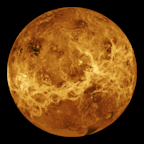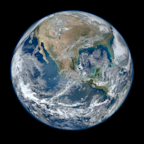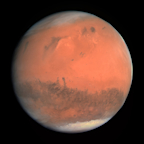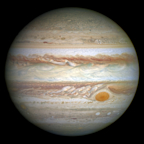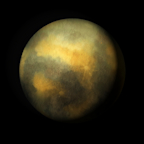Search results
Neptune is the eighth and farthest known planet from the Sun. It is the fourth-largest planet in the Solar System by diameter, the third-most-massive planet, and the densest giant planet. It is 17 times the mass of Earth and slightly more massive, but denser and smaller, than fellow ice giant Uranus.
Dark, cold and whipped by supersonic winds, giant Neptune is the eighth and most distant major planet orbiting our Sun. More than 30 times as far from the Sun as Earth, Neptune is not visible to the naked eye.
Aug 2, 2024 · Neptune, third most massive planet in the solar system and the eighth and outermost planet from the Sun. Neptune has 14 moons, only two of which were discovered before Voyager 2’s visit in 1989, and a system of rings, which were unconfirmed before Voyager.
NASA explores the unknown in air and space, innovates for the benefit of humanity, and inspires the world through discovery. Neptune is the eighth and most distant planet in our solar system. It was discovered in 1846. Neptune has 16 known moons.
Neptune is the eighth and farthest planet from the Sun in the Solar System. It is an ice giant. It is the fourth-largest planet in the system. Neptune's mass is 17 times Earth's mass and a little bit more than Uranus' mass. Neptune is denser and smaller than Uranus.
6 days ago · Neptune is dark, cold, and very windy. It's the last of the planets in our solar system. It's more than 30 times as far from the sun as Earth is. Neptune is very similar to Uranus. It's made of a thick fog of water, ammonia, and methane over an Earth-sized solid center.
Dark, cold, and whipped by supersonic winds, ice giant Neptune is the eighth and most distant planet in our solar system. More than 30 times as far from the Sun as Earth, Neptune is the only planet in our solar system not visible to the naked eye.

